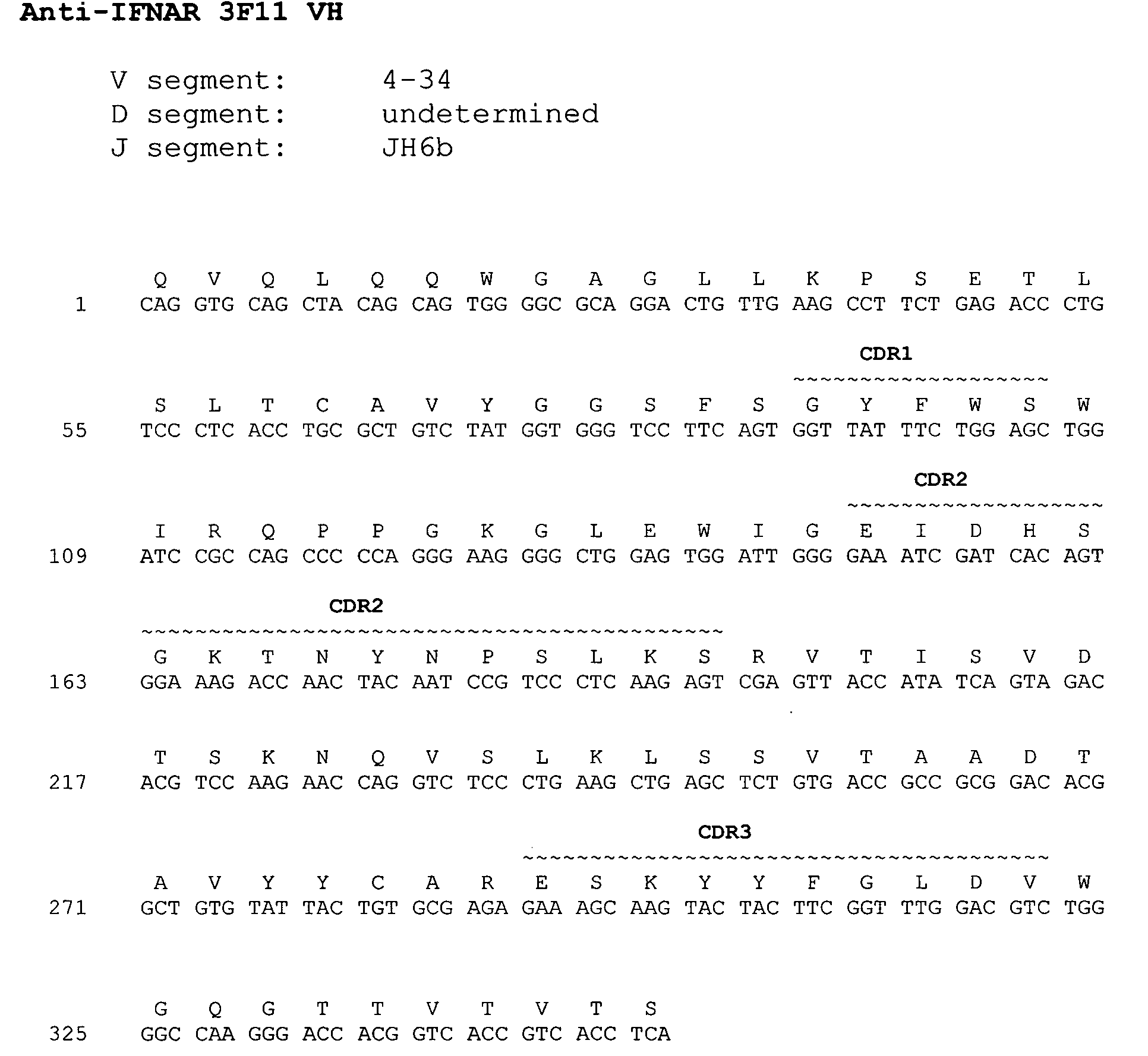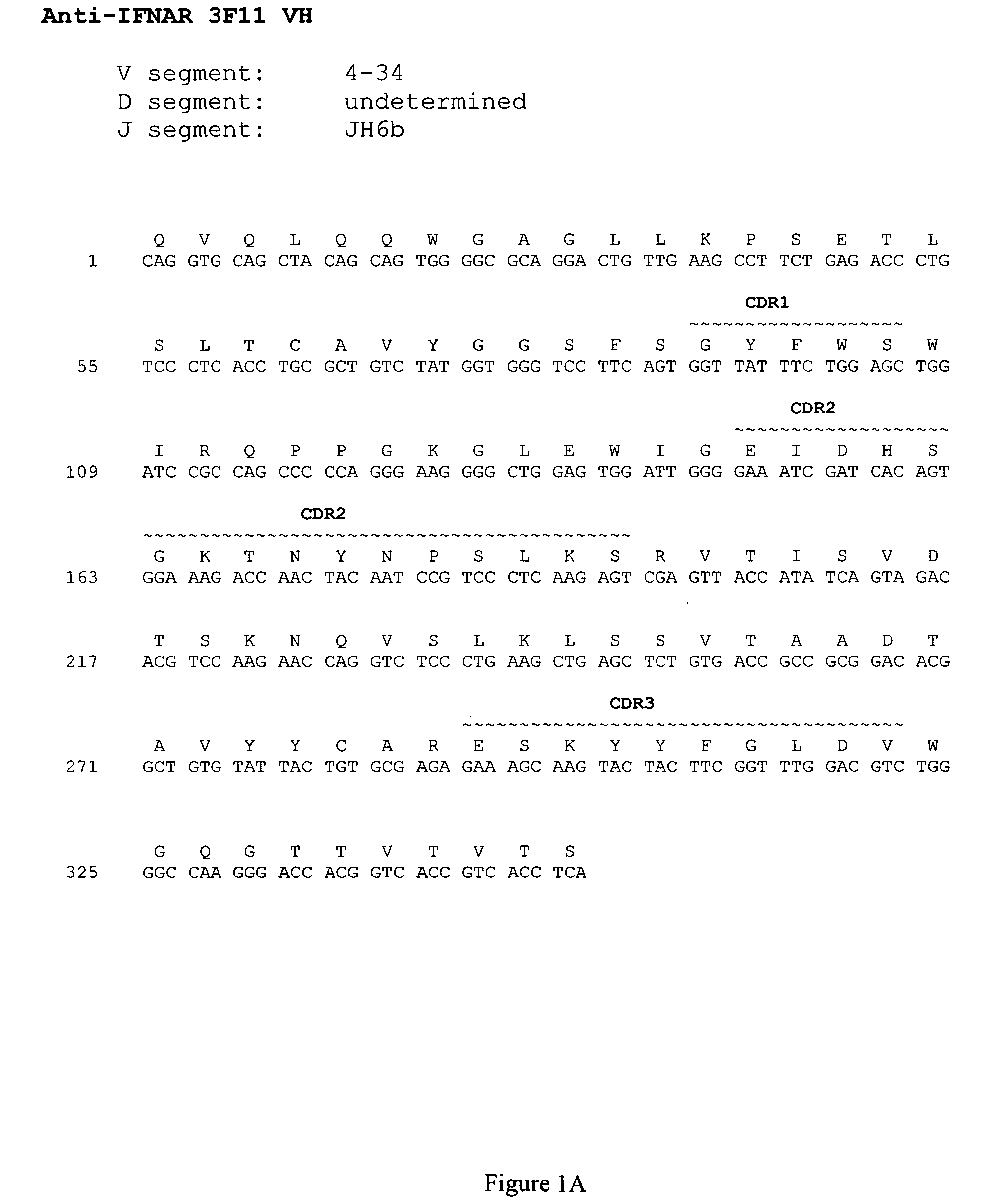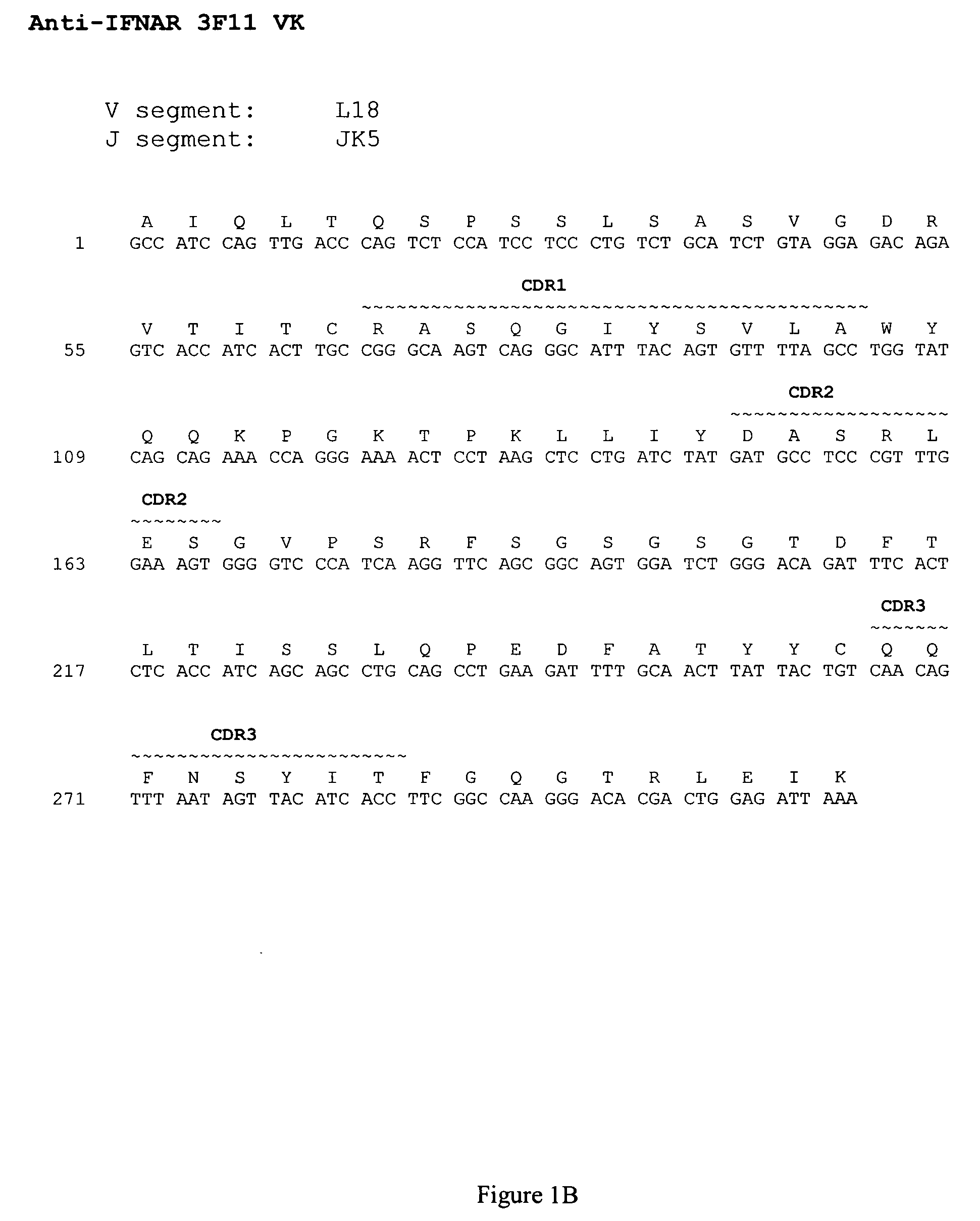Interferon alpha receptor 1 antibodies and their uses
a technology of interferon and alpha receptor, applied in the field of interferon alpha receptor 1 antibodies, can solve the problems of fever and neurological disorders, unsatisfactory side effects,
- Summary
- Abstract
- Description
- Claims
- Application Information
AI Technical Summary
Benefits of technology
Problems solved by technology
Method used
Image
Examples
example 1
Generation of Human Monoclonal Antibodies Against IFNAR-1
[0345] Soluble IFNAR-1, containing the extracellular domain of IFNAR-1 was generated by recombinant methods and used as antigen for immunization.
Transgenic HuMab Mice
[0346] Fully human monoclonal antibodies to IFNAR-1 were prepared using HCo7, HCo12, and HCo7×HCo12 strains of HuMab transgenic mice, each of which express human antibody genes. In each of these mouse strains, the endogenous mouse kappa light chain gene has been homozygously disrupted as described in Chen et al. (1993) EMBO J. 12:811-820 and the endogenous mouse heavy chain gene has been homozygously disrupted as described in Example 1 of PCT Publication WO 01 / 09187. Each of these mouse strains carries a human kappa light chain transgene, KCo5, as described in Fishwild et al. (1996) Nature Biotechnology 14:845-851. The HCo7 strain carries the HCo7 human heavy chain transgene as described in U.S. Pat. Nos. 5,545,806; 5,625,825; and 5,545,807. The HCo12...
example 2
Structural Characterization of Human Monoclonal Antibodies 3F11, 4G5, 11E2, and 9D4
[0352] The cDNA sequences encoding the heavy and light chain variable regions of the 3F11, 4G5, 11E2, and 9D4 monoclonal antibodies were obtained from the 3F11, 4G5, 11E2, and 9D4 hybridomas, respectively, using standard PCR techniques and were sequenced using standard DNA sequencing techniques.
[0353] The nucleotide and amino acid sequences of the heavy chain variable region of 3F11 are shown in FIG. 1A and in SEQ ID NO: 33 and 25, respectively.
[0354] The nucleotide and amino acid sequences of the light chain variable region of 3F11 are shown in FIG. 1B and in SEQ ID NO: 37 and 29, respectively.
[0355] Comparison of the 3F11 heavy chain immunoglobulin sequence to the known human germline immunoglobulin heavy chain sequences demonstrated that the 3F11 heavy chain utilizes a VH segment from human germline VH 4-34, an undetermined D segment, and a JH segment from human germline JH 6b. The alignment of...
example 3
Anti-IFNAR-1 Human Monoclonal Antibodies Inhibit the Biological Activity of Interferon α2b
[0369] The cell line Daudi, derived from a human B-lymphoblast Burkitt's lymphoma, expresses high levels of IFNAR-1, and the growth of these cells is inhibited by Type I interferons. To measure the functional blocking ability of human anti-IFNAR-1 antibodies, two different assays were performed, a cell proliferation assay and a reporter assay.
[0370] In the first assay, Daudi cells were cultured with interferon α2b in the presence or absence of antibody and proliferation was measured by uptake of 3[H]-thymidine. Daudi cells (ATCC CCL-213) were grown in RPMI containing 10% FCS, and 2 mM beta mercaptoethanol (media). Cells were spun and resuspended at a concentration of 1×106 cells / ml in media with added 1% human serum albumin (media & HS). To each well of a 96-well plate, 100 μl of 200 U / ml interferon α2b (Schering Corporation) containing the appropriate concentration of antibody was added. 100...
PUM
| Property | Measurement | Unit |
|---|---|---|
| dissociation constant | aaaaa | aaaaa |
| temperature | aaaaa | aaaaa |
| concentration | aaaaa | aaaaa |
Abstract
Description
Claims
Application Information
 Login to View More
Login to View More - R&D
- Intellectual Property
- Life Sciences
- Materials
- Tech Scout
- Unparalleled Data Quality
- Higher Quality Content
- 60% Fewer Hallucinations
Browse by: Latest US Patents, China's latest patents, Technical Efficacy Thesaurus, Application Domain, Technology Topic, Popular Technical Reports.
© 2025 PatSnap. All rights reserved.Legal|Privacy policy|Modern Slavery Act Transparency Statement|Sitemap|About US| Contact US: help@patsnap.com



